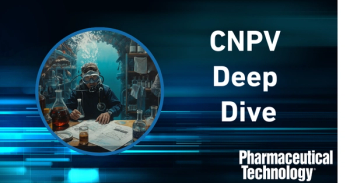
- Pharmaceutical Technology-11-02-2005
- Volume 29
- Issue 11
Defining by Example
Oddly for a technical meeting, the Oct. 5–7 AAPS Workshop on Pharmaceutical Quality Assessment focused on words, with an entire session devoted to definitions and countless discussions of meaning and nuance.
Oddly for a technical meeting, the Oct. 5–7 AAPS Workshop on Pharmaceutical Quality Assessment focused on words, with an entire session devoted to definitions and countless discussions of meaning and nuance.
Laura Bush
It was heaven for an editor.
AAPS and FDA convened the joint meeting to examine the agency's plans for overhauling the ways it reviews CMC submissions and regulates manufacturing quality. New key words underlie new key concepts in this approach: design space, quality by design, continuous improvement, and quality systems. The discussions made it clear, though, that most attendees from industry and even from FDA itself were unsure what, exactly, many of these terms mean.
That's okay. As any English teacher knows, the best way to give students command of new vocabulary is to have them use the new words and see them in action. Toward that end, attendees met repeatedly in smaller breakout sessions to explore these terms and determine how they would be applied. They used the words in many sentences and, in particular, in many questions.
One breakout session asked how a new-style CMC submission would be distinguished from the traditional type. "We'll know it when we see it," the group's rapporteur reported. Exactly.
"Example is always more efficacious than precept," as Samuel Johnson (the dictionary-maker who defined lexicographer as "a harmless drudge") put it in Rasselas.
For industry and FDA to master the meaning of this new vocabulary, we must see the concepts in practice. Design space, for example, will only truly start to take on meaning after a company applies the concept in a new drug application, and the company and the regulators debate its boundaries and determine the rules around changing it.
So the new terms, and their definitions, are useful. They provide a framework for thinking about a new approach. But it will take implementation to know what they really mean, and how the new system will work.
Articles in this issue
about 20 years ago
The Akers–Agalloco Methodabout 20 years ago
USP Initiatives for the Safe Use of Medical Gasesabout 20 years ago
Bites of Bitter PAIabout 20 years ago
Coming to Terms with the Strange Attractorabout 20 years ago
Upheaval at FDA Means Changes for the Pharmaceutical Marketabout 20 years ago
November 2005about 20 years ago
Next-Generation Sourcingabout 20 years ago
Bulk Actives Postapproval Changes: BACPAC IINewsletter
Get the essential updates shaping the future of pharma manufacturing and compliance—subscribe today to Pharmaceutical Technology and never miss a breakthrough.




